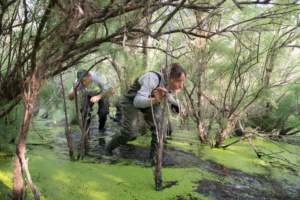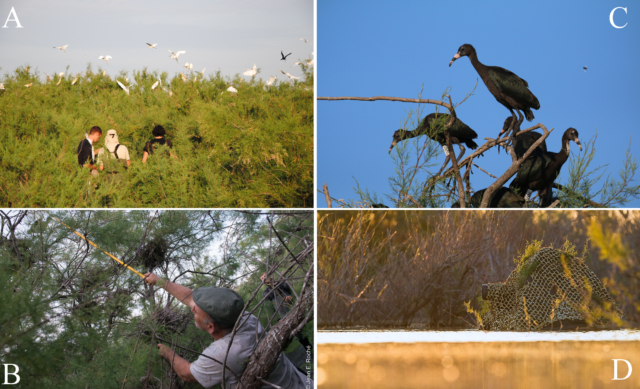
Long-term research is of vital importance in nature conservation studies, because it enables researchers to collect a great amount of data.
These data are crucial to better know and understand how the ecosystems and species studied function, and in this way make the conservation measures implemented more relevant.
This is particularly true of certain species of birds whose chicks are ringed with metal and/or PVC bands, which makes it possible to better understand the variables that affect their survival and to better track them during their seasonal movements, and even for some of them their intercontinental migrations.
The effects of these ringing operations, which are potentially disturbing for the birds and must therefore follow very strict protocols, have rarely been studied, particularly in mixed colonies in which several species live together, each with its own sensitivity to such disturbances.
Since its founding in 1954, the Tour du Valat has conducted numerous bird-ringing operations in the Camargue on several species, so wished to study the effects of such ringing on a colony of Glossy Ibis (Plegadis falcinellus), within the framework of its research programme on this species (find out more [1]).
These operations are conducted in the spring in a flooded tamarisk thicket at the Scamandre Regional Natural Reserve [2] (Gard). It features the largest heronry in France and one of the largest in Europe, and is home to several hundred pairs of Glossy Ibises, Little Egrets (Egretta garzetta), Cattle Egrets (Bubulcus ibis), Squacco Herons (Ardeola ralloides), Black-crowned Night-Herons (Nycticorax nycticorax), and dozens of Grey Herons (Ardea cinerea). All of these species nest together, with mixed nests that are very close to each other.
 [3]
[3]Based on the monitoring of more than 300 nests of Little Egrets, Cattle Egrets, and Glossy Ibises, our study on the effects of ringing operations showed there was no major negative effect on nest success or chick survival for any of the species studied. The nest height and installation date in the colony are the most significant variables for explaining the breeding success of these species.
However, the breeding success of the Glossy Ibis seems to decrease slightly because of ringing, yet this drop does not seem to be the direct consequence of handling them. Therefore, the causes behind this slight drop in the survival rate of fledglings must still be explained.
Initiated in 2006 when the first colony was established, the Glossy Ibis ringing occurred at the same time as an exponential increase in this species—today there are more than 1000 pairs on the site. Our ringing operations have shown that breeding is expanding along the French Mediterranean coast, the multiple exchanges with Spanish populations, as well as the dispersal of ibises that sometimes travel quite far, as attested by the recent sighting of an ibis chick in the Azores that was ringed in May 2019 at the Scamandre colony.
The complete study, including the protocol used and the results, has been published by PeerJ, and can be downloaded for free by clicking on this link [4].
Contact: Jocelyn Champagnon [5], Research Scientist at the Tour du Valat (e-mail [6])
Bibliographical reference: Champagnon J., Carré H., Gili L. 2019. Effects of research disturbance on nest survival in a mixed colony of waterbirds. PeerJ 7:e7844. doi: 10.7717/peerj.7844